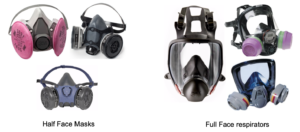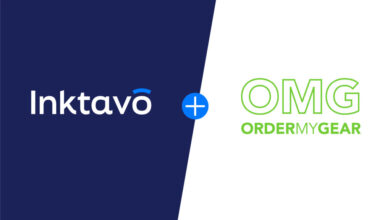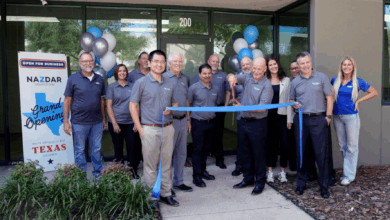One of the most frequent questions from customers is, “which respirator should I wear when using reclaim products?” Before we get into which mask to wear, it’s important to know that OSHA regulates the use of a respirator in the workplace. If a business requires its employees to wear respiratory protection, OSHA requires the business to develop, maintain, and document a full respirator program. However. “Employers are not required to include in a written respiratory protection program those employees whose only use of respirators involves the voluntary use of filtering facepieces (dust masks). (21-CFR 1910.134(c)(2)(ii)).
More often than not, wearing a mask while using screen printing reclaim products is voluntary. Ok, now on to which mask to use if you want to wear one.
As I’m sure everyone who has tried to purchase a respirator is aware, there are lots of different mask options to protect you and your co-workers. There are two general categories of respiratory protection: face masks and disposable respirators. Face masks are usually half-face (doesn’t cover the eyes) or full-face (with built-in eye protection) and are constructed with a soft polymer that seals to the face and uses replaceable cartridges.
Both half-face and full-face masks provide similar protection as a respirator, can be cleaned, is reusable, but there’s a catch. These masks are generally more expensive and can cause feelings of claustrophobia in some people. It can also be hard to know when to replace the cartridges as it depends on what you’re filtering and the environment you’re working in.
Disposable respirators have been in the news a lot lately, more specifically, the shortage of them. The N95 is the one getting the most attention. Before COVID-19, you could find N95, P95, R95, N100, P100, and R100 masks.
So, which one do you purchase for those that feel more comfortable wearing a mask? First, the number in the product name reference the particles it will filter out, so an N95 mask will filter out 95% of particles with a size of 300nm (which is 0.00001 inches, so really, really small) and an N100 mask will filter out 99.97% of the particles. The letter designation is for oil resistance, and this is key for choosing the correct mask.
N – Not Resistant to Oil
R – Somewhat Resistant to Oil (up to 8 hours of use)
P – Strongly Resistant to Oil. (up to 40 hours or 30 days of use)
While the N95 masks are the least expensive of the bunch, they are not adequate to be used with liquid cleaning products that contain petroleum distillates (oils). As you move higher in the number, not only does the price increase, but the mask becomes denser, and it requires more effort to breathe.
As always, it is essential to remember that these masks are only good at filtering out airborne particulates. None of these masks will protect the wearer in low oxygen environments.




